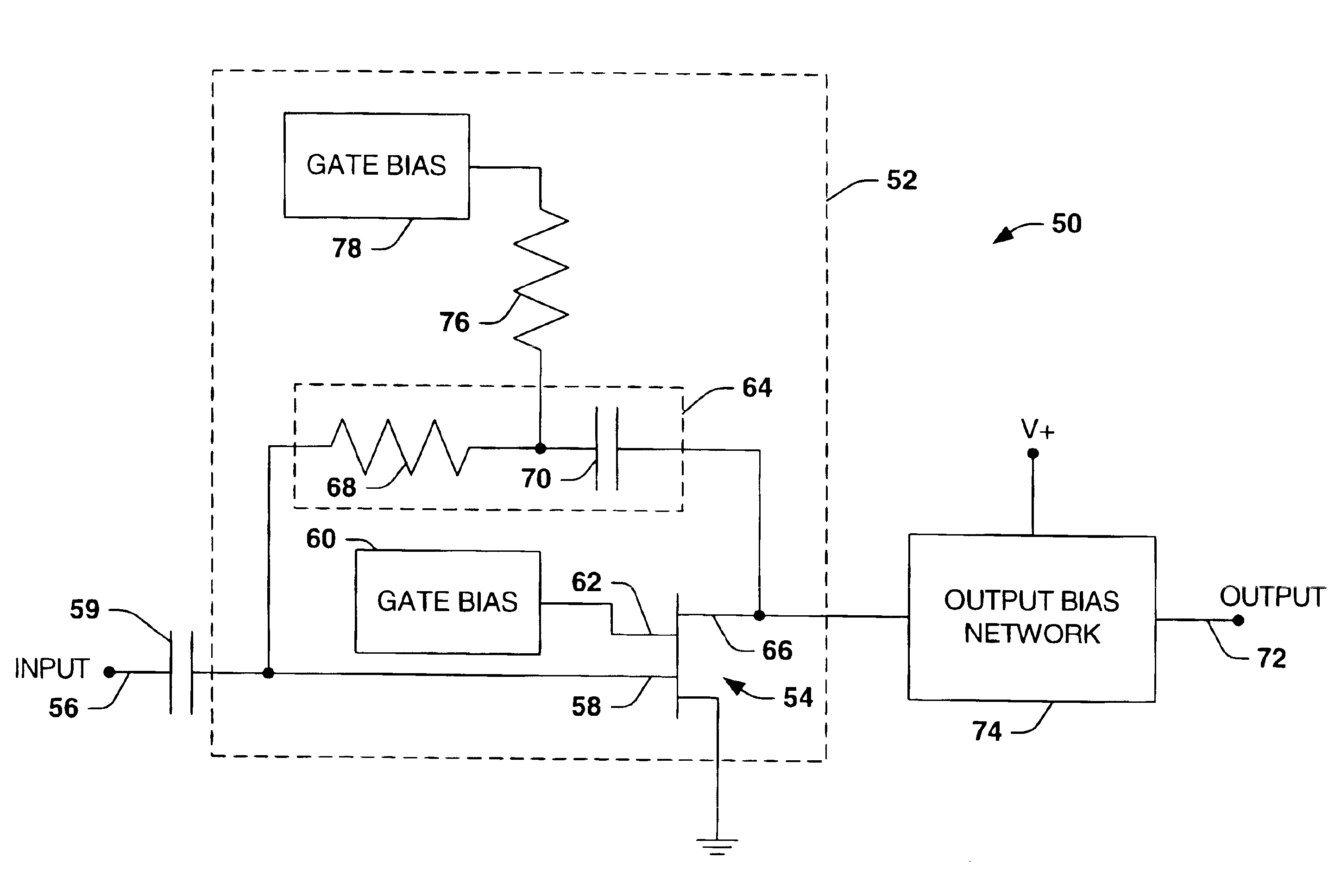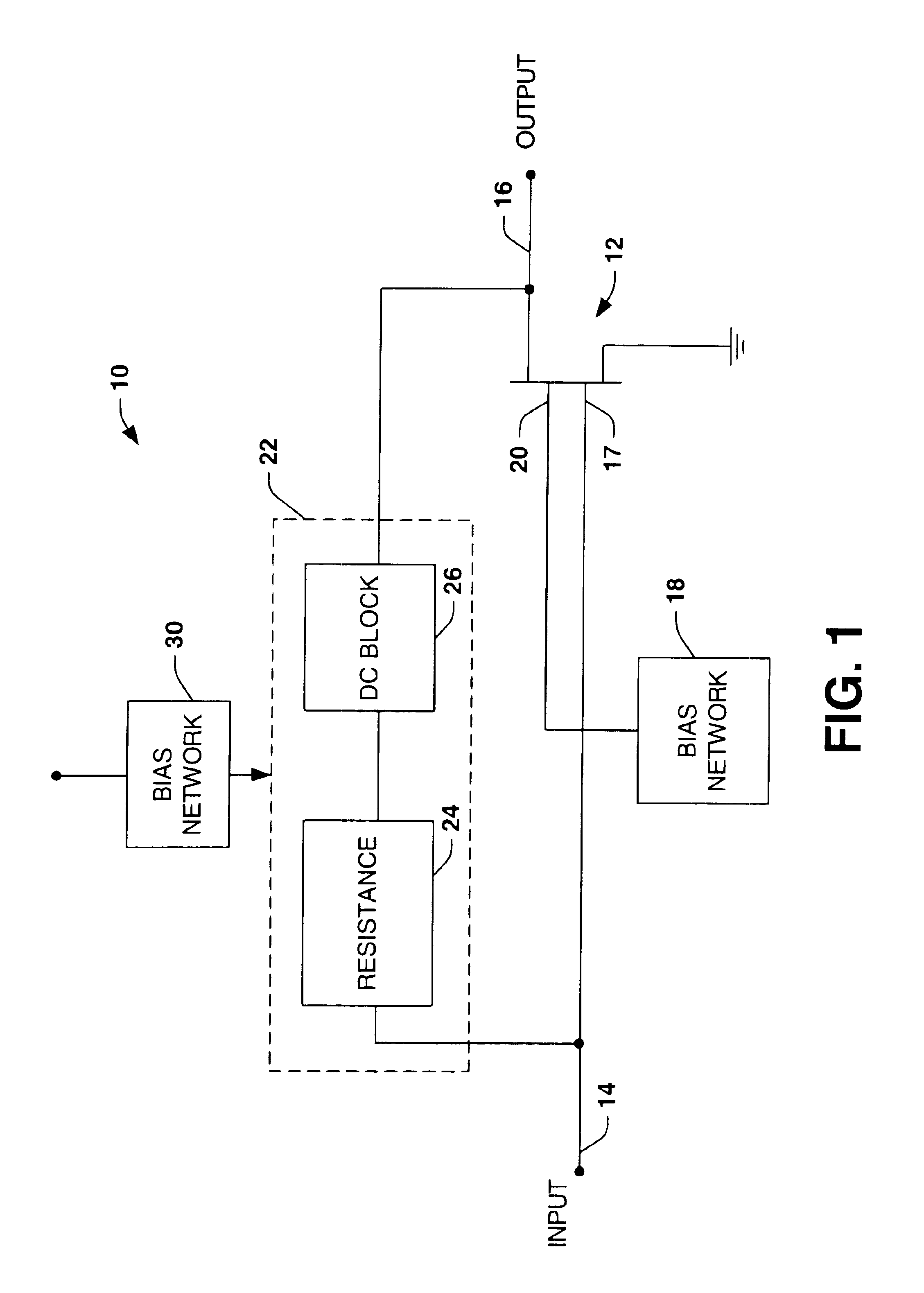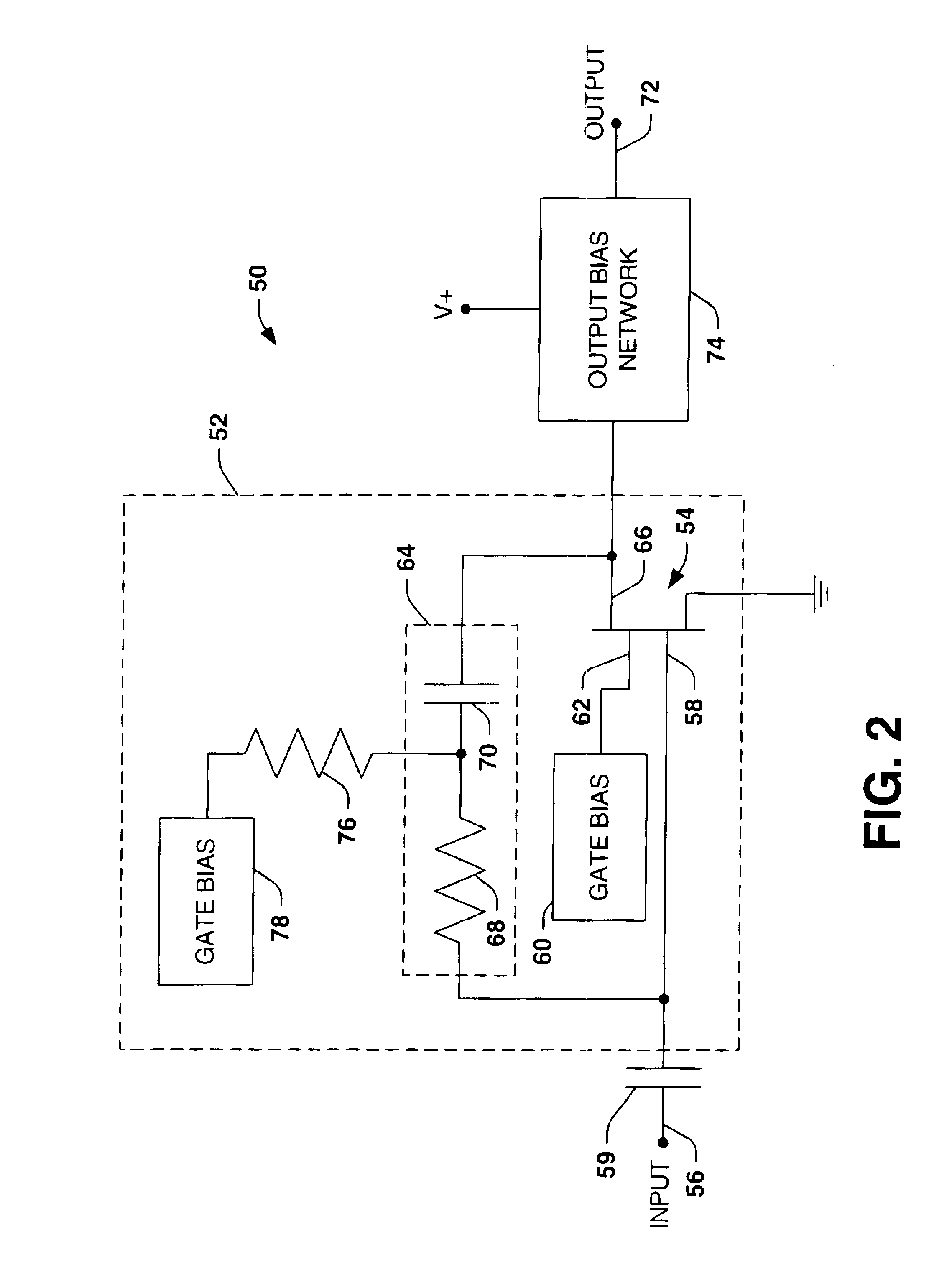Dual gate low noise amplifier
a low-noise amplifier and dual-gate technology, applied in the direction of low-noise amplifiers, amplifiers with field-effect devices, gain control, etc., can solve the problems of increasing noise, introducing additional unwanted noise into the amplifier output, and often having to reach compromise between the end goals, so as to improve performance and achieve low noise. the effect of figure and high gain
- Summary
- Abstract
- Description
- Claims
- Application Information
AI Technical Summary
Benefits of technology
Problems solved by technology
Method used
Image
Examples
Embodiment Construction
The present invention relates to a low noise amplifier topology that can be implemented with a dual gate high electron mobility transistor (HEMT) device. The amplifier employs resistive feedback with a DC block associated with the amplifier output to provide desired high voltage gain and a low noise figure for desired frequencies, such as generally in the range of VHF and microwave frequencies.
FIG. 1 illustrates a schematic example of a low noise amplifier 10 in accordance with an aspect of the present invention. The amplifier 10 includes a dual gate transistor device 12 that is coupled to an input 14 for receiving a RF input signal. The transistor device 12 is operative to amplify the RF input signal and provide an amplified output signal at an associated output 16.
The transistor device 12 can be a dual gate field effect transistor (FET) fabricated to provide high electron mobility (e.g., a high electron mobility transistor (HEMT) device). A dual gate HEMT device affords increased ...
PUM
 Login to View More
Login to View More Abstract
Description
Claims
Application Information
 Login to View More
Login to View More - R&D
- Intellectual Property
- Life Sciences
- Materials
- Tech Scout
- Unparalleled Data Quality
- Higher Quality Content
- 60% Fewer Hallucinations
Browse by: Latest US Patents, China's latest patents, Technical Efficacy Thesaurus, Application Domain, Technology Topic, Popular Technical Reports.
© 2025 PatSnap. All rights reserved.Legal|Privacy policy|Modern Slavery Act Transparency Statement|Sitemap|About US| Contact US: help@patsnap.com



